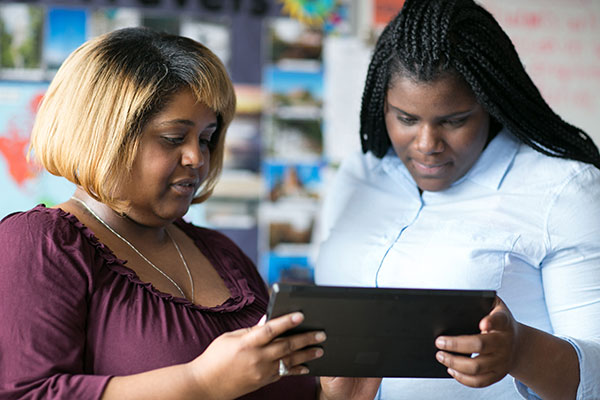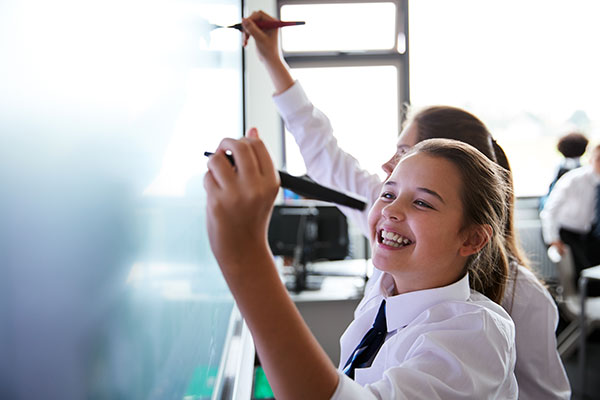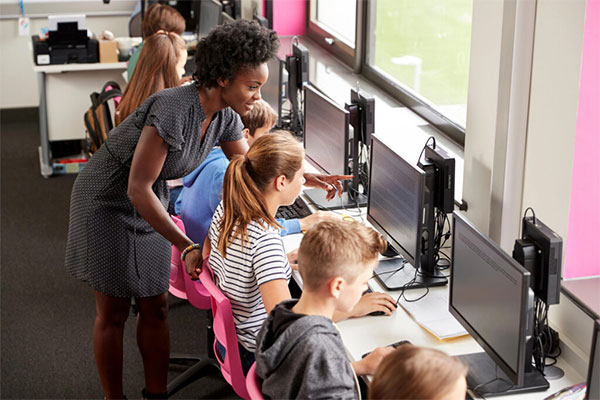June 7, 2018
As a subject matter expert in secondary education, one of the best parts of my job is getting to walk through classrooms observing high-quality instruction. I get to talk with site leaders. I get to work with instructional coaches and discuss what makes a really great classroom with effective instruction for all learners.
In this blog, I’m going to share something with you that some of the best principals I know have already figured out: There’s a clear difference between participation and engagement when you’re in a high school or middle school classroom. In fact, it’s essential to focus on the issue of participation vs. engagement in order to identify high-quality instruction.
I’m also going to give you a couple of tips that will help you spot when students are participating but are not necessarily engaged. Then I’ll show you the clues you should be looking for that mean students are deeply engaged in learning. Because it’s possible for students to be highly participatory in class but not engaged in a meaningful way with the content.
When this occurs, your lessons are much less impactful than they could be.

4 signs of disengaged participation in the classroom
First, let’s take a look at some of the signs that indicate students are involved rather than being engaged during a lesson.
#1: Students give single-word answers
This would be, for example, when students are answering your questions with single words or brief phrases. Even if they provide the correct answer and are answering enthusiastically, students don’t normally talk in single words and phrases—especially when they’re talking about something that has a personal connection or meaning for them.
So, even if you’re hearing the right answers, it doesn’t necessarily mean your students are engaged in the content.
#2: Students stay at low Depth of Knowledge (DOK) levels
Another clear sign that students are not engaged in meaningful learning is when all the questions and answers are coming out of a Depth of Knowledge Level 1 or Level 2. (DOK 1 = Recall and reproduction; DOK 2 = Skills and concepts.)
I see this frequently in math classes. I’ll be visiting classrooms, and students and teachers will be working out problems on the board or in an interactive way. But if the teacher is basically using the students as human calculators, asking them to compute figures, it doesn’t mean that they’re engaged in true problem-solving.
To put this another way: Asking students to do computations does not mean that they’re learning the actual math concepts. There’s a big difference in participation vs. engagement in this context. Participating in class while solving a single problem and engaging with the concept in a meaningful way are not the same thing.

#3: Students don’t need time to think
Here’s something that you can always watch for if you’re thinking about student engagement. If students don’t need wait time before answering a question, they’re not thinking.
It’s great to walk into a classroom and hear students actively participating and responding to the teacher’s questions. But if they’re able to fire back answers as fast as the teacher is able to call the questions out, that means students are not engaged in the learning process. They’re simply repeating back the knowledge they already have.
There’s a lack of engagement, even though the participation level in the room is very high.
#4: The majority of classroom interactions are between students and the teacher
Even if everything else looks great, I want you to watch who’s doing all of the talking in the classroom. If the conversation is largely between students and the teacher, there’s no engagement. Student-to-teacher conversation is participation.
You can have deep engagement between a student and the teacher, but we’re talking about teenagers here. If teenagers are engaged in a lesson and they’re making personal meaning out of it, they are going to talk to each other about it rather than just having a conversation with their instructor.
So, if there is really meaningful engagement going on in the classroom, you’re not going to have as much student-to-teacher conversation, because students will be speaking with peers instead.
Solutions for middle & high school
Discover literacy and math solutions from Renaissance to help engage every learner.

4 Signs of true engagement in the classroom
So, what are some signs that the students are really engaged in a meaningful way and learning? Here’s what I think you’ll see happening when students are truly engaged.
#1: Students talk in complete sentences without prompting
Students naturally talk in complete sentences. When a student cares about or is actively participating in the content, they won’t just give one-word answers. It’s really human for us to speak in complete sentences. Single words and phrases mean the student is disengaged.
#2: Students make lots of “I” statements
You’ll also want to listen for the number of “I” statements that students are making: “I think…,” “I just realized that…,” “I’m surprised that…,” “I wonder whether…,” “I remember when…,” etc. As preteens and teenagers start to make sense of their learning, they’re going to be connecting it to:
- What they’ve seen
- What they’ve heard
- What they’ve thought
- What they’ve felt
So, when you hear lots of “I” statements, that’s a really good sign that the students are making sense of and organizing the information in a way that makes sense to them. “I” statements are a better indicator of engagement than just being able to provide the right answer.

#3: Students spontaneously interact with one another
You should also see spontaneous student-to-student conversations. If the student and teacher have a two-way conversation and everybody else listens passively, that means the other learners are not engaged.
As every high school educator knows, teenagers don’t usually stay out of each other’s business. Whatever one teenager says is going to spark an idea, a rebuttal, or an elaboration from somebody else. So, you want to see student-to-student interaction where they’re building, contradicting, or rebutting what the other student is saying (ideally in a respectful way).
Student-to-student interaction is the best sign that students are truly and meaningfully engaged in the content you’re teaching.
#4: Conversations go “off topic”
Another great sign that students are engaged in the content is when the teacher is really working to keep it on topic. Teenagers don’t naturally stay on topic; instead, they are constantly pulling in new ideas.
And again, this is a sign that they’re making sense of and ordering the facts in a way that makes sense within their learning. It’s actually a good thing when students are wandering off of the main topic in their conversations, asking questions of the teacher and of each other, and making connections between topics or skills.

Supporting student engagement in middle and high school
Meaningful engagement is the most important component as we get down to:
- Depth of Knowledge Level 3 (Short-term strategic thinking)
- Depth of Knowledge Level 4 (Extended thinking)
- Conversations; and
- Having students really start to make sense of their own learning
So, as you’re looking at the instruction in your own school, don’t get involvement vs. engagement confused. Make sure you’re watching to see that your students are getting really engaged in a lesson, are making connections, and are talking with each other about the content they’re learning.
Renaissance solutions for secondary students
If you’re looking for literacy and math solutions for middle and high school learners, Renaissance can help. We offer:
- Accelerated Reader, to motivate and monitor students’ independent reading practice
- myON, which provides 24/7 access to engaging digital books, including a wide variety of classics
- Freckle, for differentiated skills practice in ELA and mathematics
- Nearpod, for teacher-facilitated instruction and engagement
Learn more
Connect with an expert today to learn more about these and other Renaissance solutions to accelerate learning in middle and high school.

